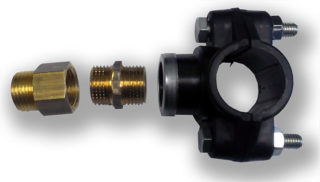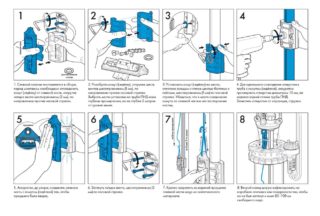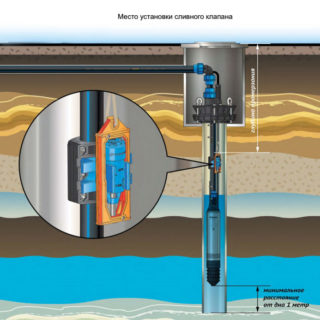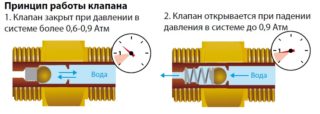An autonomous water supply system must be equipped with a drain valve. Thanks to this technical device of small dimensions, it is possible to prevent freezing of the system, which becomes the reason for its complete failure. Drain valves installed in water supply systems prevent the occurrence of various abnormal situations.
Purpose and scope
Installation of the drain device allows you to prevent these unpleasant phenomena. In addition, the miniature part prevents the consequences of water hammer. The use of a drain part makes the system more productive and efficient, and the service life of the entire system is extended.
Principle of operation and device
- Turning off the pumping equipment leads to a pressure drop in the pipeline. When the mark reaches 0.6-0.7 bar, the drain valve is triggered and naturally drains the remaining fluid from the pipeline back into the well.
- After starting the pumping equipment, the pressure in the system rises to 1.5 bar, the valve closes.
This operating principle effectively prevents unwanted stagnation of the water column in the piping system.

The automatic device is a small-sized device in a brass body, the inner cavity is equipped with a plastic valve. When the line pressure drops, the valve drain hole opens. For the manufacture of the case, as a rule, stainless steel is used. Main structural elements:
- Composite type of body, parts of which are connected by means of a thread.
- Locking mechanism consisting of two movable spool plates, mounted on a special stem and a gasket.
- A plastic valve installed at the outlet of the port.
The drain valve must be installed at a depth below freezing of the soil level. The optimum installation depth is 5 meters.
When buying a device, you should not give preference to the most budgetary ones, since, as a rule, low-quality materials with a short operational life are used in the manufacture.
Criterias of choice
If the homeowner has a need to purchase a drain valve with a grid for installation on a water supply system, you need to rely on the selection criteria and technical parameters of the product:
- indicators of nominal, test and working closing pressure;
- tightness class;
- conditional throughput indicators;
- seat diameter.
The documentation supplied with the pumping system or water pump contains information on the technical requirements for the drain valve and its modifications.
You need to purchase new products that were made no more than 5 years ago. If they have been stored in warehouses for a long time, the work of the part may be unproductive.
Installation features

To install the drain valve yourself, you need to familiarize yourself with the installation features. Highlights:
- Before installing the part, you need to check whether the system is equipped with a filter for coarse water purification. If not, during operation the valve will constantly clog and quickly fail.
- The drain valve is mounted on the pressure line below the downhole adapter (if used).
- During installation, the trajectory of the working medium in the pipeline is taken into account. For this, a direction arrow is indicated on the body of the pumping equipment. If you neglect this rule and install the device incorrectly, it will not fail, but it will not be able to perform its task either.
- In the system, the temperature of the working environment must be less than the permissible on the part.
The service life of the cheapest valves with a mesh and a rubber seal does not exceed 3 months. To prevent this problem, it is recommended that only metal seated equipment with a metal-to-metal seal be preferred.











“The shutdown of the pumping equipment leads to a pressure drop in the pipeline. When the mark reaches 0.6-0.7 bar, the drain valve is activated and naturally drains the remaining fluid from the pipeline back into the well. "
It is completely incomprehensible why the shutdown of the pumping equipment leads to a drop in pressure? After all, if the system is sealed, then it (the accumulator) will keep the pressure to which it was pumped.